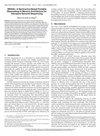使用机器学习从多路性能计数器数据估计CPI堆栈
IF 1.4
3区 计算机科学
Q4 COMPUTER SCIENCE, HARDWARE & ARCHITECTURE
引用次数: 0
摘要
如果清楚地了解软件面临的瓶颈,在运行时优化软件会容易得多。CPI堆栈是可视化这些瓶颈的常用方法。然而,现有的实现CPI堆栈的建议需要对硬件进行修改。为了在不修改CPU的情况下计算CPI堆栈,我们演示了可以使用机器学习从现有的性能计数器中估计CPI堆栈。本文章由计算机程序翻译,如有差异,请以英文原文为准。
Estimating CPI Stacks From Multiplexed Performance Counter Data Using Machine Learning
Optimizing software at runtime is much easier with a clear understanding of the bottlenecks facing the software. CPI stacks are a common method of visualizing these bottlenecks. However, existing proposals to implement CPI stacks require hardware modifications. To compute CPI stacks without modifying the CPU, we demonstrate CPI stacks can be estimated from existing performance counters using machine learning.
求助全文
通过发布文献求助,成功后即可免费获取论文全文。
去求助
来源期刊

IEEE Computer Architecture Letters
COMPUTER SCIENCE, HARDWARE & ARCHITECTURE-
CiteScore
4.60
自引率
4.30%
发文量
29
期刊介绍:
IEEE Computer Architecture Letters is a rigorously peer-reviewed forum for publishing early, high-impact results in the areas of uni- and multiprocessor computer systems, computer architecture, microarchitecture, workload characterization, performance evaluation and simulation techniques, and power-aware computing. Submissions are welcomed on any topic in computer architecture, especially but not limited to: microprocessor and multiprocessor systems, microarchitecture and ILP processors, workload characterization, performance evaluation and simulation techniques, compiler-hardware and operating system-hardware interactions, interconnect architectures, memory and cache systems, power and thermal issues at the architecture level, I/O architectures and techniques, independent validation of previously published results, analysis of unsuccessful techniques, domain-specific processor architectures (e.g., embedded, graphics, network, etc.), real-time and high-availability architectures, reconfigurable systems.
 求助内容:
求助内容: 应助结果提醒方式:
应助结果提醒方式:


